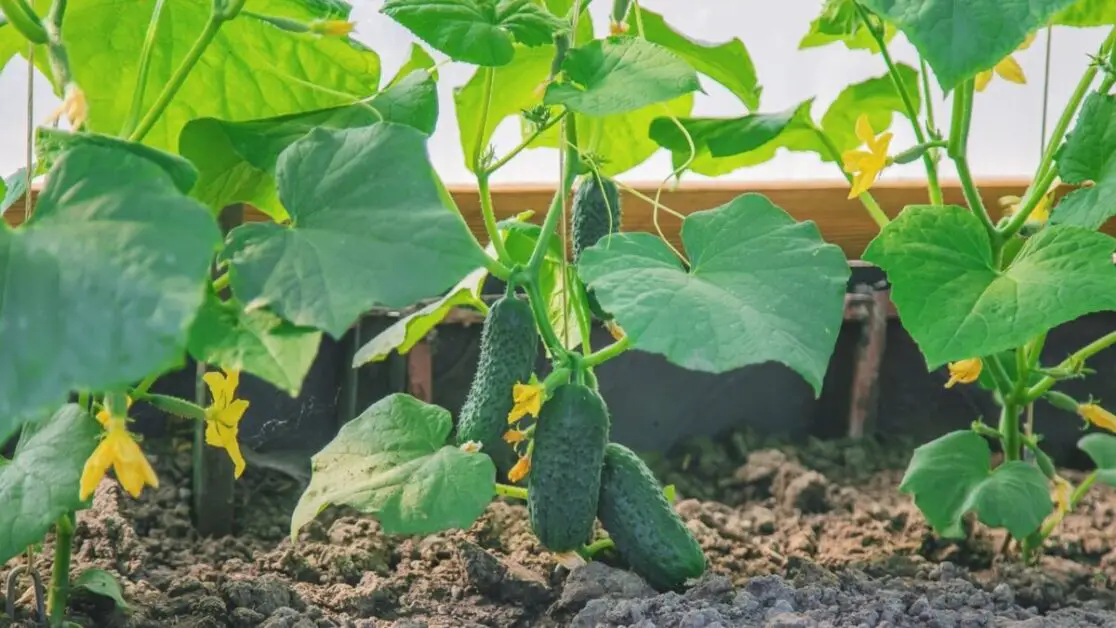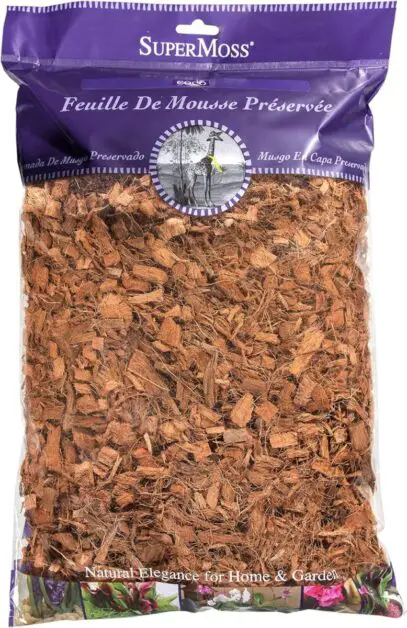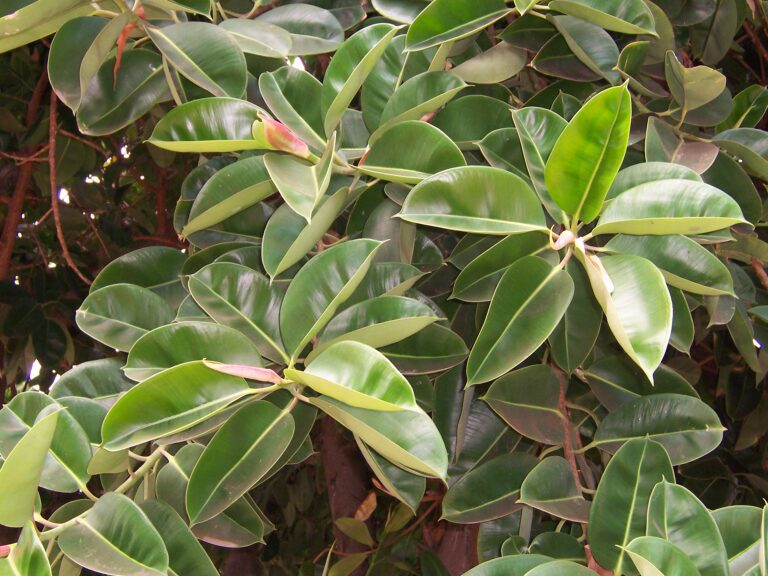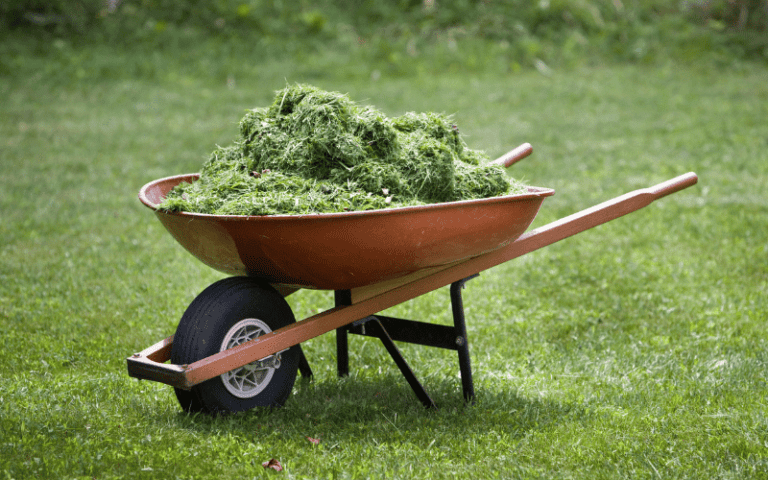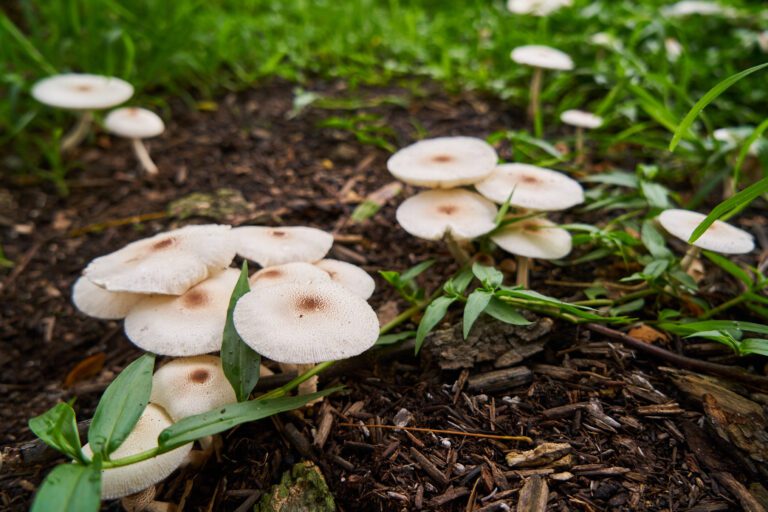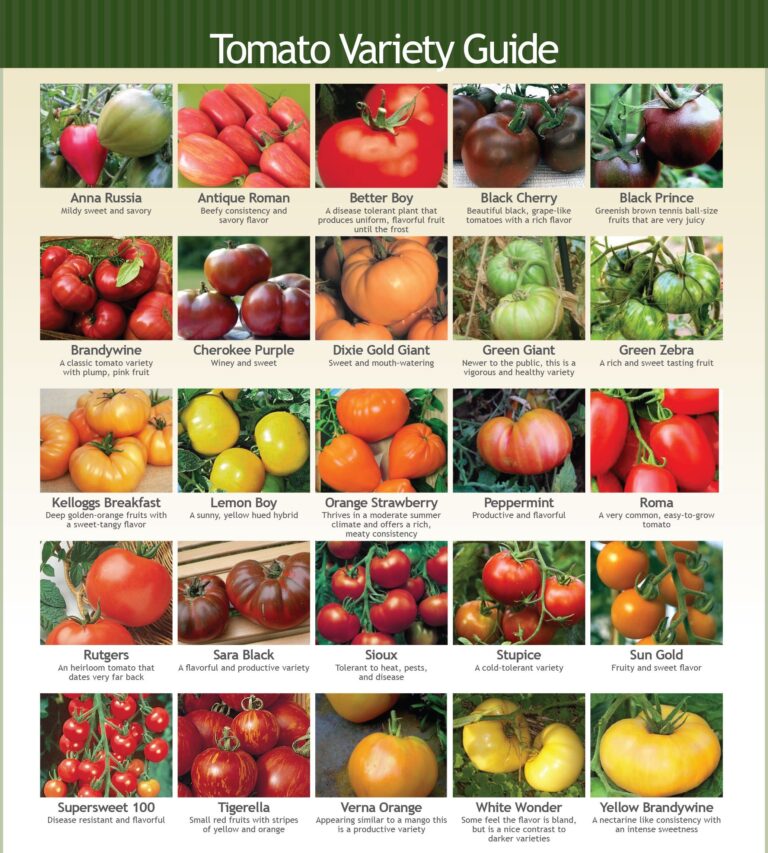Cucumber Spacing In The Home Garden
Did you know that cucumber plants require proper spacing for optimal growth and yield? If you’re planning to grow cucumbers in your home garden, it’s crucial to get the spacing right. But how much space do cucumber plants really need?
As a professional writer with a passion for gardening, I’ve done the research to help you get the most out of your cucumber plants. The ideal spacing for cucumber plants in a home garden is between 3-5 feet apart in rows that are 6-8 feet apart. This spacing allows for proper air circulation, which can help prevent disease and pests, and provides ample room for the plants to grow and produce fruit.
By following these guidelines, you’ll be on your way to a bountiful cucumber harvest. So, grab your gardening tools and let’s get started!
Table of Contents
The Importance of Proper Cucumber Spacing
Proper cucumber spacing is paramount to ensuring healthy, vigorous plants and maximizing productivity in your garden. When cucumbers are overcrowded, competition for essential resources like water, nutrients, and sunlight intensifies, leading to stunted growth and decreased yields. On the other hand, spacing them too far apart can result in wasted space and lower overall crop productivity.

- Variety Matters:
- Different cucumber varieties have varying growth habits. Bush varieties are compact and can be planted closer together, while vining varieties need more space.
- Bush Cucumbers: These naturally take up less space. You can plant them about 12 to 18 inches apart.
- Vining Cucumbers: These require more room. Space them approximately 18 to 36 inches apart.
- Assess Available Area:
- Evaluate the growing area. Ensure that neighboring plants won’t hinder cucumber growth.
- Adequate spacing prevents overcrowding, promotes air circulation, and reduces disease risk.
By striking the right balance, you can create an environment that allows each cucumber plant to thrive, resulting in healthier and more bountiful harvests.
Understanding the Growth Habits of Cucumbers
Cucumbers, scientifically known as Cucumis sativus, are annual plants that belong to the gourd family, Cucurbitaceae. They are highly sought after by gardening enthusiasts due to their delicious taste, refreshing texture, and versatility in culinary applications. Understanding the growth habits of cucumbers is essential for successful cultivation and bountiful harvests.
:strip_icc()/marketer-cucumber-60e158aa-c3f14f3be8a74d1a98b3a57e589a3e84.jpg)
- Cucumber Growth Habit:
- Vigorously growing vines with sprawling habit.
- Can spread up to six feet in length.
- Require ample space to thrive.
- Importance of Proper Spacing:
- Prevents overcrowding and competition for resources.
- Minimizes spread of diseases.
- Factors Influencing Spacing:
- Type of cucumber variety:
- Bush cucumbers: more compact growth, require less space.
- Vining cucumbers: sprawling nature, need generous spacing.
- Type of cucumber variety:
- Preferred cultivation method:
- Direct sowing or transplanting may dictate different spacing.
- Sunlight availability:
- Ensure each plant receives adequate sunlight for photosynthesis.
- Soil fertility:
- Optimal nutrient availability supports healthy growth.
- Air circulation:
- Good airflow reduces risk of disease development.
Each approach may dictate different spacing requirements. Additionally, the availability of sunlight, soil fertility, and air circulation should also be taken into account when determining cucumber spacing.
Factors to Consider When Determining Cucumber Spacing
Determining the proper spacing for cucumber plants is an important consideration for successful cultivation. The spacing between cucumber plants will directly impact their growth and overall productivity. There are several factors to consider when determining cucumber spacing, including the variety of cucumber being grown, the available area for cultivation, and the desired growth habit of the plants.
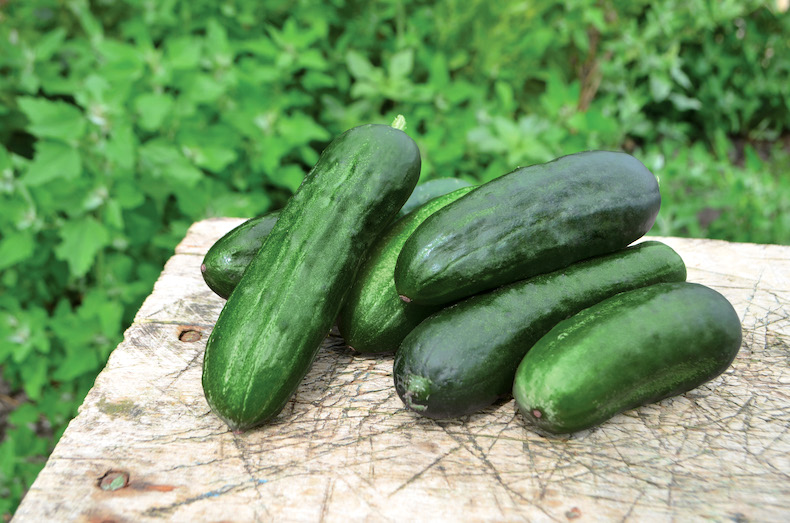
- Disease suppression: Proper spacing of cucumber plants reduces disease prevalence by increasing air circulation around the plants, which helps prevent fungal diseases like powdery and downy mildews, and botrytis.
- Higher yields: Plants with sufficient space have less competition for resources like water, nutrients, and sunlight, allowing each plant to reach its full growth potential and yield more cucumbers.
- Optimal use of space: Proper spacing enables gardeners to make the best use of their growing space, especially when growing cucumbers vertically on trellises, fences, or other structures.
- Pest prevention: Adequate spacing helps deter common pests like cucumber beetles, aphids, whiteflies, flea beetles, and others by encouraging healthy, uncrowded growth.
- Cucumber spacing requirements based on growing method:
- Ground-level growing: For cucumbers grown directly in the ground or raised beds, follow these guidelines based on seed sowing or transplanting:
- Seed sown directly into the garden: Plant seeds 1-2 inches deep and thin to one plant per 18-24 inches once they have set their first two true leaves.
- From transplants planted into the garden: Space transplants 18-24 inches apart.
- Sunlight: Cucumbers grow in full sun but can survive with just 5 hours a day. Spacing is important to prevent competing cucumber vines from shading one another out, which prevents even cucumber growth.
- Cucumber starts: For growers starting their own cucumber seeds, place 3-4 seeds in each small pot filled with potting mix and thin to a single plant per pot once the cucumber has set its first two true leaves.
By taking into account the variety of cucumber being grown and the available area for cultivation, you can determine the ideal spacing needed for your cucumber plants. This thoughtful consideration will contribute to healthier plants, better airflow, and ultimately, a bountiful cucumber harvest. In the following sections, we will delve deeper into the specific techniques and measurements for measuring and marking cucumber spacing.
The Ideal Soil Conditions for Cucumber Growth
Cucumbers require specific soil conditions to thrive and produce a bountiful harvest. The ideal soil for cucumber growth is rich, well-drained, and loamy.
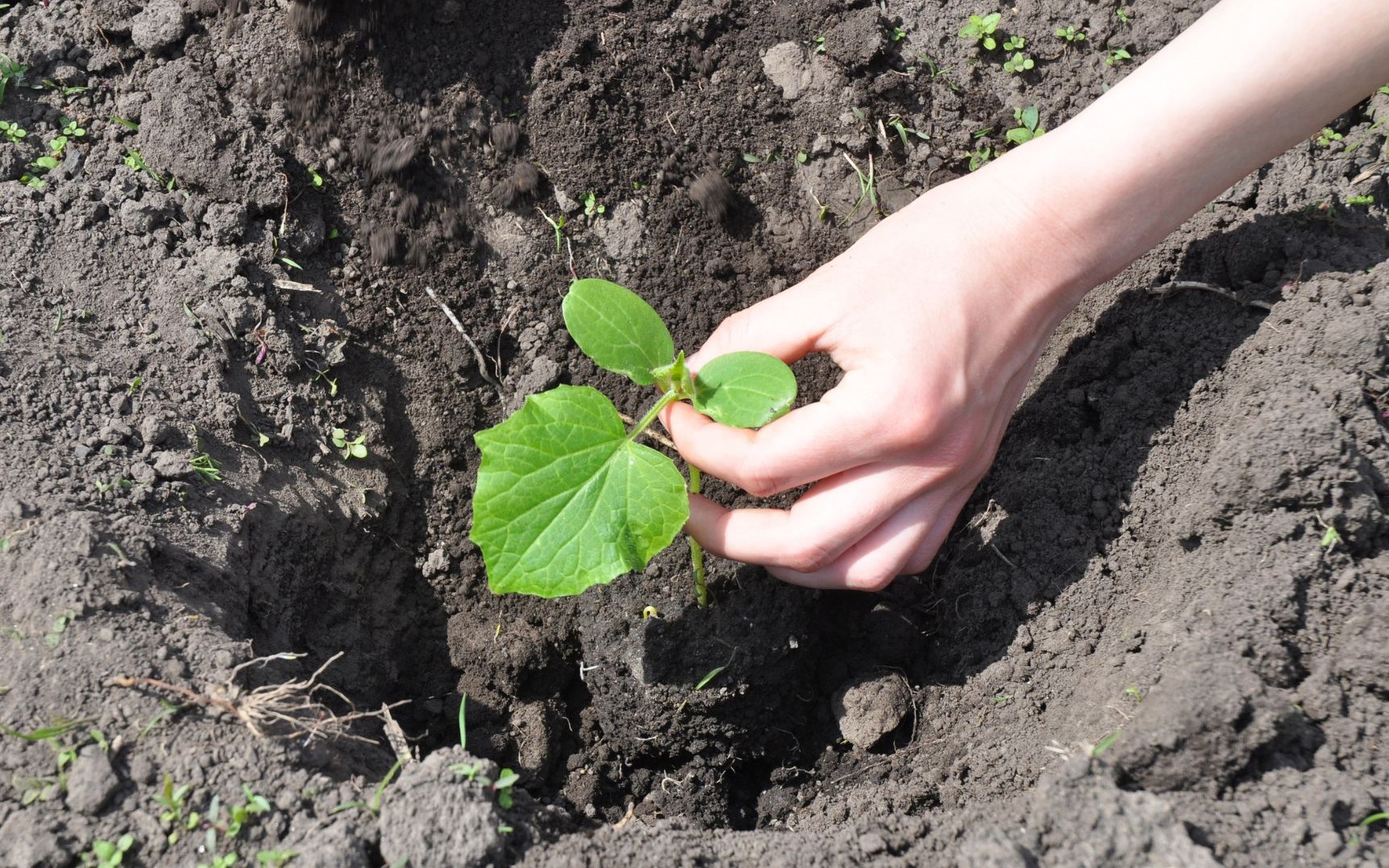
Supports proper root development.
Ensures access to nutrients and moisture.
Prevents waterlogging and root rot.
Enhances soil aeration and reduces disease risk.
Incorporate organic matter like compost or well-rotted manure.
Improves soil structure and water infiltration.
pH range of 6.0 to 7.0 is ideal.
Provides readily available nutrients for uptake.
Testing soil pH and adjusting with lime or sulfur as needed.
Maximizes productivity and health of cucumber plants.
Creates favorable conditions for growth and development.
Relatively adaptable to varying soil conditions.
Ideal soil conditions optimize plant performance.
Next, we will explore the importance of accurate cucumber spacing and how it influences their growth and development.
How to Measure and Mark Cucumber Spacing
To ensure the proper growth and development of your cucumber plants, it is essential to measure and mark the spacing between each plant. Accurate spacing not only promotes healthy growth but also facilitates efficient airflow and reduces the risk of diseases. When measuring cucumber spacing, one important factor to consider is the type of cucumber being planted. Different varieties have varying growth habits and sizes, which will determine the ideal spacing between plants.

- Cucumber spacing is crucial for optimizing plant growth, ensuring efficient air circulation, and reducing the risk of diseases.
- Spacing between plants should be around 12 to 24 inches apart, depending on the variety and its specific requirements.
- Spacing between rows should be around 36 to 48 inches apart for vining cucumber varieties.
- Mark each planting location using stakes, flags, or any other suitable markers to ensure precise spacing between plants.
- Proper cucumber spacing provides ample room for each plant to grow and spread its vines without overcrowding.
- Adequate spacing between rows facilitates ease of access for watering, fertilizing, and harvesting.
- Cucumber seeds will not germinate at a soil temperature below 50°F (10°C).
- Direct seeding should be done 2 seeds/ft., 1/2″ deep, in rows 6′ apart, and then thinned to 12″ apart.
- Avg. direct seeding rate is 30 seeds/15′, 100 seeds/50′, 250 seeds/125′, 500 seeds/250′, 1,000 seeds/500′, 15M/acre at 2 seeds/ft. in rows 6′ apart.
- Practice crop rotation, residue sanitation, and choose disease-resistant varieties to control diseases.
- Control insect pests to help prevent bacterial wilt.
- Harvest once fruit bearing begins, pick daily.
- Hold cucumbers at 45–50°F (7–10°C) and 90% relative humidity for up to 2 weeks.
- Different varieties have varying growth habits and sizes, which will determine the ideal spacing between plants.
- Measure the vertical distance between each plant using a ruler or measuring tape to ensure precise measurements.
Techniques for Direct Sowing Cucumber Seeds
When it comes to direct sowing cucumber seeds, it is essential to follow proper techniques to ensure successful germination and healthy plant growth.
soil temperature
One key factor to consider is the soil temperature. Cucumber seeds require a soil temperature of at least 60°F (15°C) for optimal germination. By using a soil thermometer, you can accurately determine when the conditions are suitable for sowing cucumber seeds.

sowing cucumber
Another important aspect to consider when direct sowing cucumber seeds is the depth at which the seeds are planted. It is recommended to sow the seeds at a depth of 1 inch (2.5 cm) in the soil. This depth provides sufficient coverage for the seeds while still allowing them to absorb the necessary moisture and oxygen for germination. Gently patting the soil after sowing will help to secure the seeds in place.
spacing
Additionally, spacing is crucial for the proper development of cucumber plants. It is recommended to sow the seeds in rows that are spaced approximately 4 to 6 feet (1.2 to 1.8 meters) apart. Within each row, the seeds should be sown at intervals of 12 to 24 inches (30 to 61 cm) to allow ample space for the plants to spread out and grow. Using a planting guide or stakes can assist in maintaining the desired spacing for optimum plant growth.
By following these techniques for direct sowing cucumber seeds, you can greatly increase the chances of successful germination and healthy plant development. It is important to ensure the soil temperature is suitable, plant the seeds at the proper depth, and provide adequate spacing for the plants to thrive. With careful attention to these factors, your cucumber plants will be well on their way to producing a bountiful harvest.
The Amazon Basics Self-Locking Tape Measure is a reliable tool that I recently added to my toolkit. Its 25-foot length, combined with both inch and metric scales, makes it versatile for various projects. What impressed me the most is its self-locking mechanism, which allows the inner tape to extend smoothly and retract effortlessly with just a push of a button. This feature not only saves time but also ensures accuracy in measurements. The tape measure feels sturdy yet lightweight in hand, and the bright yellow color makes it easy to spot. Overall, I found it to be a practical and efficient tool for my DIY projects and home improvement tasks.
- Accurate Measurement: This tape measure features MID accuracy, ensuring precise measurements both in inches and metric scale, up to 25 feet (8 meters). This accuracy is essential for various applications, whether it’s construction, crafting, or DIY projects.
- Self-Locking Mechanism: The self-locking mechanism with a push-button release allows the inner tape to be smoothly extended and retracted. This feature enhances convenience and efficiency during use, preventing the tape from retracting unexpectedly.
- Durable Construction: Constructed with a heat-treated spring and anti-skid ABS and soft rubber exterior, this tape measure is designed for long-lasting performance and impact protection. The bright yellow color enhances visibility, making it easy to locate on the job site or in your toolbox.
- Convenient Features: The tape measure comes with a belt clip and a comfortable wrist strap for easy carrying and quick access. These features ensure that the tape measure is always within reach when needed, increasing productivity.
- Limited Blade Length: While the 25-foot blade length is sufficient for many tasks, there may be instances where a longer tape measure is required, especially for large-scale construction or outdoor projects. In such cases, users may need to supplement with additional tools.
- Plastic Construction: Some users may prefer a tape measure with a metal casing for added durability, particularly in rugged environments where the tool is subjected to frequent drops or impacts. The plastic construction of this tape measure may not withstand heavy-duty use as effectively as metal counterparts.
Transplanting Cucumber Seedlings: Best Practices
When it comes to transplanting cucumber seedlings, following best practices is essential to ensure their successful establishment and growth.
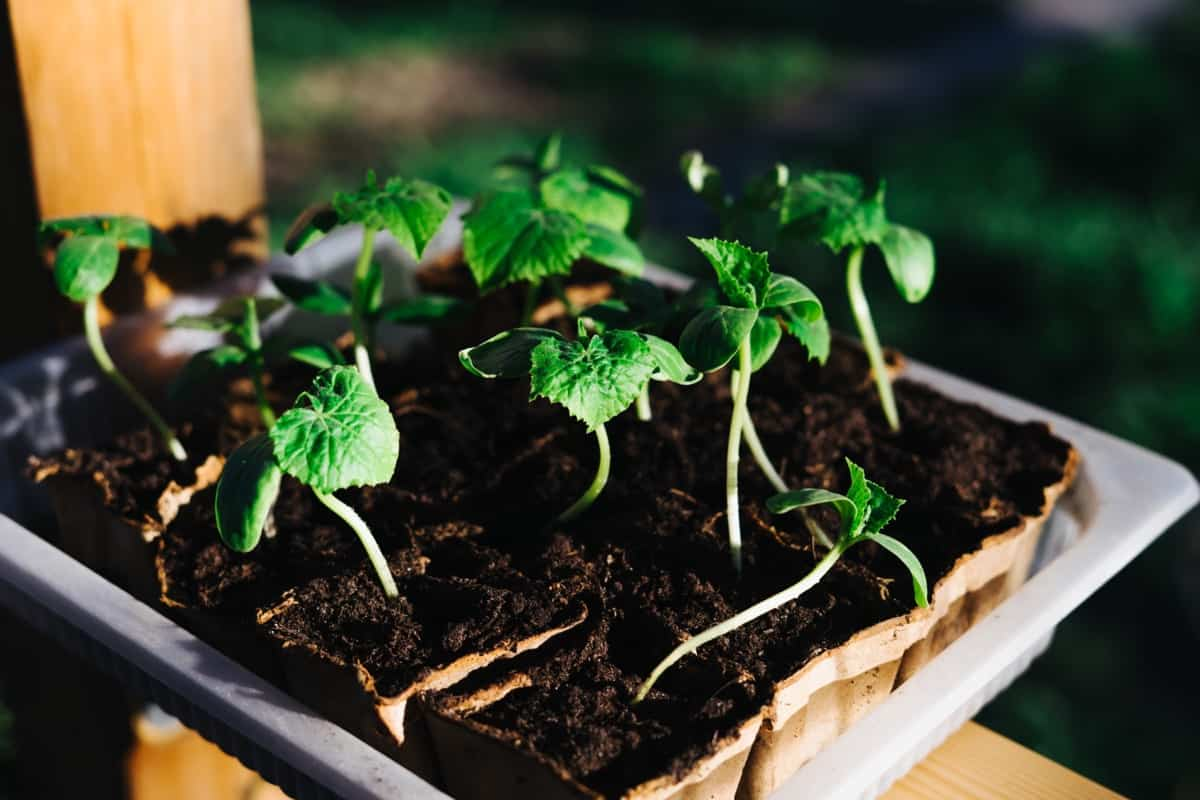
- Soil Preparation before Transplanting:
- Well-draining soil with pH between 6 and 7 preferred for cucumbers.
- Incorporate organic matter like compost or aged manure to improve soil structure and fertility.
- Hardening Off Seedlings:
- Gradually expose seedlings to outdoor conditions before transplanting.
- Move seedlings to sheltered area for a few hours daily, increasing time gradually over several days.
- Helps seedlings adjust to temperature, sunlight , and wind, reducing transplant shock.
- Transplanting Guidelines:
- Space cucumber seedlings appropriately to accommodate growth.
- Typically spaced 12 to 24 inches apart, depending on variety.
- Adequate spacing promotes good air circulation, reduces disease risk, and ensures access to nutrients and sunlight.
- Proper spacing supports optimal growth and vine development.
Maintaining Optimal Air Circulation Around Cucumber Plants
Maintaining optimal air circulation around cucumber plants is crucial for ensuring their healthy growth and productivity.
- Importance of Air Circulation:
- Adequate airflow is essential for healthy cucumber growth and productivity.
- It reduces the risk of plant diseases by minimizing fungal diseases such as powdery mildew.
- Proper air circulation directly impacts cucumber quality, promoting even ripening and preventing bitter or misshapen fruits.
- Strategic Spacing:
- Proper spacing between cucumber plants is crucial.
- Aim for approximately 2 feet (60 centimeters) between plants in rows.
- Rows should be spaced 3 to 4 feet (90 to 120 centimeters) apart.
- This spacing allows ample room for growth and ensures air can freely circulate around each individual cucumber plant.
Remember to adjust these guidelines based on the specific cucumber variety you’re growing. Happy gardening! 🌱🥒
Controlling Weeds and Pests in Cucumber Beds
Weeds and pests can pose significant challenges for cucumber beds, but with the right strategies, they can be effectively controlled. Weeds not only compete with cucumbers for nutrients, sunlight, and water but also provide hiding places for pests. To prevent weed growth, it is crucial to implement proper cultivation practices such as tilling the soil before planting and applying a layer of organic mulch around the cucumber plants.
| Pest | Symptoms | Treatment | Effects on Plants |
|---|---|---|---|
| Aphids | – Small, soft-bodied insects on leaves and stems. – Yellow or distorted leaves. – Sticky honeydew. | – Spray plants with a strong jet of water. – Prune infested branches. – Use reflective mulches. – Organic insecticides (e.g., insecticidal soap or Neem oil). | – Reduced yield. – Stunted growth. – Sooty mold due to honeydew. |
| Cabbage Loopers | – Pale green caterpillars with white lines. – Chew holes in leaves. | – Release beneficial insects (parasitic wasps). – Handpick eggs and worms. – Apply Bacillus thuringiensis (organic control). | – Extensive leaf damage. |
| Cucumber Beetles | – Yellow or striped beetles. – Feed on leaves and flowers. – Transmit bacterial wilt. | – Handpick beetles. – Use floating row covers. – Plant resistant varieties. – Apply neem oil or diatomaceous earth. | – Reduced yield. – Bacterial wilt transmission. |
| Cutworms | – Nocturnal caterpillars that cut seedlings at the base. | – Place collars around seedlings. – Handpick cutworms. – Apply biological control (e.g., parasitic nematodes). | – Seedling damage. |
| Flea Beetles | – Tiny, jumping beetles. – Chew small holes in leaves. | – Use floating row covers. – Apply neem oil or insecticidal soap. – Companion planting (e.g., basil or marigolds). | – Leaf damage. |
| Leafminers | – Larvae tunnel inside leaves, creating serpentine trails. | – Remove infested leaves. – Apply neem oil or insecticidal soap. – Beneficial insects (e.g., parasitic wasps). | – Reduced photosynthesis. – Leaf discoloration. |
| Loopers | – Pale green caterpillars that arch their bodies. – Chew holes in leaves. | – Release parasitic wasps. – Handpick eggs and worms. – Apply Bacillus thuringiensis (organic control). | – Leaf damage. |
| Pickleworms | – Yellow-green caterpillars with dark spots. – Bore into fruits. | – Handpick caterpillars. – Apply neem oil or insecticidal soap. – Row covers. – Remove infested fruits. | – Fruit damage. |
| Seedcorn Maggots | – White, legless maggots that feed on seeds and seedlings. | – Plant later in the season. – Use well-draining soil. – Avoid excessive moisture. – Apply beneficial nematodes. | – Seedling damage. |
By implementing effective weed control and pest management strategies, cucumber enthusiasts can ensure that their plants thrive and produce an abundant harvest. With proper vigilance and timely intervention, the challenges posed by weeds and pests can be overcome, allowing for healthy and flourishing cucumber beds. Stay tuned as we explore more techniques and best practices for successful cucumber cultivation in the coming sections.
Watering Guidelines for Cucumber Plants
Watering is a crucial aspect of cucumber plant care, as it directly affects their growth and overall health.
- Cucumber plants require consistent moisture to thrive due to their shallow root systems.
- Balancing adequate hydration and avoiding waterlogged conditions is crucial to prevent root rot and other issues.
- Deeply irrigate the soil at the base of the plants rather than overhead watering to prevent leaves from getting wet and reduce the risk of fungal diseases.
- Encourage roots to grow deeper, improving the plant’s overall water uptake ability by using a soaker hose or drip irrigation system.
- Drip irrigation delivers water directly to the root zone, minimizing wastage and promoting efficient absorption.
- Consistency is key in watering cucumber plants.
- Maintain a consistent watering schedule, as cucumbers thrive on routine and need regular, deep watering to develop a robust root system.
- Adjust watering frequency throughout the growing season based on the plant’s growth stage and environmental conditions.
- During the germination stage, consistent moisture is key to sprouting success.
- As seedlings, cucumbers require frequent but light watering to keep the soil moist but not waterlogged.
- Once the plants establish themselves, they can handle slightly less frequent but deeper watering to encourage strong root growth and help the plant access nutrients lower in the soil profile.
- During the fruiting stage, cucumbers need more water to support the development of those crunchy, refreshing fruits.
- Temperature spikes and prolonged dry spells mean more frequent watering, while high humidity slows down transpiration, reducing the plant’s water needs.
- Low humidity can lead to wilted plants, so keep the soil moist to avoid a plant meltdown.
- Water early in the morning during hot weather to avoid evaporation and when the air is dry to prevent wilting.
- Water the base of the plant and avoid wetting the foliage to prevent diseases.
- Use mulch around the plants to maintain good soil moisture and prevent diseases.
- Keep the soil wet at a depth of at least 15 cm (6 inches).
I recently tried the SuperMoss Coco Mulch in my garden, opting for the 200 in3 Bag size. Overall, I found it to be a fantastic addition to my gardening routine. The mulch not only enhanced the appearance of my garden beds with its natural brown color but also effectively retained moisture, promoting healthy plant growth. Its long-lasting nature and resistance to water rejection set it apart from traditional peat soils, providing a sustainable and practical alternative. Despite some mixed opinions on the size and pricing, I found the quality and ease of use to be excellent. Overall, I highly recommend the SuperMoss Coco Mulch for gardeners looking to improve their soil quality and enhance plant vitality.
✅ Moisture Retention: Coco mulch has excellent moisture retention properties, helping to keep the soil evenly moist and reducing the frequency of watering.
✅ Weed Suppression: By forming a dense layer over the soil, coco mulch can effectively suppress weed growth, reducing the need for manual weeding and chemical herbicides.
✅ Longevity: Unlike traditional mulches such as wood chips, coco mulch has a longer lifespan. It breaks down slowly, providing long-term benefits to the soil structure and plant health.
✅ pH Balanced: The mulch has a pH range of 5.7 to 6.2, which is suitable for most garden plants. It won’t significantly alter the pH of the soil, making it compatible with a wide range of plant species.
❌ Appearance: While some gardeners appreciate the natural brown color of coco mulch, others may find it less visually appealing compared to other mulch options available in different colors and textures.
❌ Volume: The volume of coco mulch may appear deceiving, especially in smaller packaging sizes. Some users have reported that the amount of mulch they received was less than expected based on the product description.
❌ Availability: Depending on your location, coco mulch may not be as readily available as other types of mulch. This can pose challenges for gardeners who rely on local garden centers or nurseries for their gardening supplies.
❌ Initial Odor: Coco mulch may have a slight odor initially, particularly if it’s freshly processed. While this odor typically dissipates over time, it can be off-putting to some individuals during the initial application phase.
Fertilizing Cucumbers: Dos and Don’ts
Fertilizing cucumbers properly is crucial for ensuring healthy growth and abundant yields. However, it’s important to know the dos and don’ts to avoid damaging your plants and to maximize their potential. Here are some key points to keep in mind when fertilizing cucumbers.
| Aspect | Dos | Don’ts |
|---|---|---|
| Timing | – Do: Fertilize at planting time using a balanced fertilizer. – Do: Apply additional fertilizer when the first true leaves appear. | – Don’t: Over-fertilize early in the growing season. – Don’t: Fertilize during flowering. |
| Type of Fertilizer | – Do: Use a balanced fertilizer (e.g., 10-10-10 or 14-14-14). – Do: Consider organic options (compost, fish emulsion). | – Don’t: Use high-nitrogen fertilizers exclusively. – Don’t: Use slow-release fertilizers. |
| Application Method | – Do: Apply fertilizer evenly around the base of the plant. – Do: Water after fertilizing to prevent burning. | – Don’t: Apply fertilizer directly on leaves or stems. – Don’t: Over-apply. |
| Frequency | – Do: Fertilize every 3-4 weeks during active growth. – Do: Monitor plant health and adjust as needed. | – Don’t: Fertilize too frequently. – Don’t: Neglect fertilization. |
| Watering | – Do: Water thoroughly after fertilizing. – Do: Maintain consistent soil moisture. | – Don’t: Fertilize without proper watering. – Don’t: Allow soil to dry out. |
By following these dos and don’ts of cucumber fertilization, you can provide your plants with the nutrients they need in a balanced and controlled manner. This will contribute to their overall health, vigor, and productivity, allowing you to enjoy an abundant cucumber harvest season after season.
Training Cucumber Vines for Vertical Growth
When it comes to training cucumber vines for vertical growth, there are several techniques that can help maximize your plant’s potential. One popular method is using trellises or stakes to provide support and guide the vines upward. By training the vines vertically, you can save space in your garden and ensure proper airflow and sunlight penetration for the entire plant.
:max_bytes(150000):strip_icc()/cucumber-trellis-2000-c0f9d8ba62414a8fb59bd613f6f0952a.jpg)
Choose the Right Support Structure:
- Select a sturdy trellis made of wood or metal, or decide on using stakes placed at regular intervals along the row of cucumber plants.
- Ensure the support structure is tall enough to accommodate the full height of the cucumber vines and sturdy enough to bear their weight when they’re laden with fruit.
Prepare the Ground:
- Before installing the trellis or stakes, prepare the ground by loosening the soil and removing any weeds or debris that may interfere with the support’s stability.
Install the Trellis or Stakes:
- If using a trellis, securely anchor it into the ground at both ends of the row of cucumber plants. Make sure it stands upright and doesn’t wobble.
- If using stakes, drive them firmly into the ground at regular intervals along the row, ensuring they are spaced adequately to provide support for the growing vines.
Guide the Main Vine:
- As the cucumber plants begin to grow, identify the main vines, which is typically the largest and strongest one.
- Gently guide the main vine upwards along the trellis or stake, using your hands to encourage its growth in the desired direction.
Secure the Vines:
- Once the main vine is positioned along the support structure, use soft plant ties or gardening twine to loosely fasten it to the trellis or stakes.
- Avoid tying the vines too tightly, as this can restrict their growth and cause damage. Instead, provide enough slack to accommodate their natural expansion.
Regular Maintenance:
- Periodically check on the cucumber vines to ensure they remain properly trained along the trellis or stakes.
- Adjust the ties as needed to accommodate the growth of the vines and prevent them from becoming tangled or overcrowded.
Harvesting and Maintenance:
- As the cucumber plants mature and begin to produce fruit, regularly harvest the cucumbers to encourage continued growth and productivity.
- Monitor the condition of the trellis or stakes throughout the growing season, making any necessary repairs or reinforcements to ensure they continue to provide adequate support.
By following these steps, you can effectively train your cucumber vines vertically using trellises or stakes, maximizing space in your garden and creating an organized and efficient growing environment.
Identifying and Treating Common Cucumber Diseases
Common Cucumber Diseases can significantly impact the health and productivity of your cucumber plants. Identifying these diseases early on is crucial for effective treatment and prevention.
downy mildew
One of the most common diseases that affect cucumbers is downy mildew. This fungal disease usually appears as yellowish spots on the upper surface of the leaves, while the underside may have a fuzzy appearance. Downy mildew thrives in cool, humid conditions, making it important to provide adequate airflow and reduce excess moisture around your plants.
powdery mildew
Another common disease to watch out for is powdery mildew. This fungal infection manifests as a white, powdery coating on the leaves, stems, and even the fruits of cucumber plants. Powdery mildew thrives in warm, dry environments, which can be challenging to control. Regularly inspecting your plants for any signs of this disease and promptly treating it can help prevent its spread and save your cucumber crop. Fungicides specifically designed for powdery mildew can be used as a treatment option, but it’s important to follow the instructions carefully to ensure safe and effective use.
By being vigilant and promptly addressing any signs of common cucumber diseases like downy mildew and powdery mildew, you can protect the vitality and productivity of your cucumber plants. Regularly monitoring your plants, maintaining good airflow, and following appropriate treatment methods will go a long way in ensuring a healthy cucumber harvest. Stay tuned for our upcoming article on preventive measures to minimize the risk of these diseases affecting your cucumber plants.
Harvesting Cucumbers at the Right Time
Cucumbers are best harvested when they have reached the desired size and color, ensuring maximum flavor and texture. To determine the right time for harvesting your cucumbers, it is important to consider the specific variety of cucumber you are growing and the intended use of the fruit.
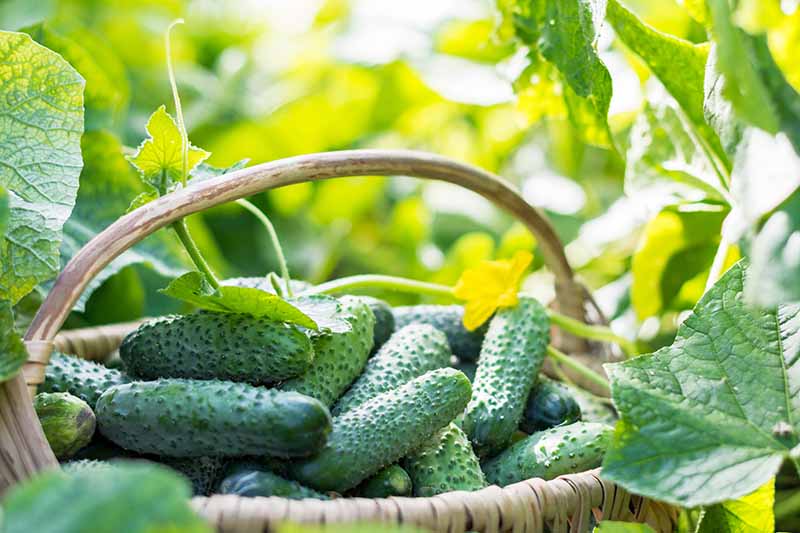
- For slicing cucumbers, it is recommended to harvest them when they have reached a length of 6 to 8 inches.
- Slicing cucumbers at this size are typically crisp, tender, and have a mild flavor.
- If left on the vine for too long, slicing cucumbers may become seedy and develop a bitter taste.
- To maintain optimal flavor and texture, regularly check your cucumber plants and harvest the fruits as soon as they reach the desired size.
- Pickling cucumbers are best harvested when they are smaller in size, around 2 to 4 inches.
- These cucumbers are specifically grown for pickling purposes and have a crisp texture and excellent flavor when harvested at their peak size.
- Waiting too long to harvest pickling cucumbers can result in larger, tougher fruits that may not be as suitable for pickling.
- Understand the specific characteristics of your cucumber variety and the intended use of the fruit to ensure you harvest at the right time for the best flavors and textures.
- Take regular assessments of your cucumber plants and monitor the size and color of the fruits to determine the optimal time for harvest.
Remember, fresh cucumbers are a delight in various culinary creations, so strive to harvest them at their prime for the tastiest results.
Storing and Preserving Cucumbers
Cucumbers are a versatile and refreshing addition to many recipes, but how do you ensure they stay fresh and crisp for as long as possible?

- Ideal Temperature:
- Store cucumbers at a cool temperature, ideally between 45 and 55 degrees Fahrenheit (7 to 13 degrees Celsius).
- Avoid temperatures below 40 degrees Fahrenheit (4 degrees Celsius) to prevent chill damage and maintain quality.
- Ethylene Sensitivity:
- Cucumbers are sensitive to ethylene gas, which accelerates ripening and can lead to premature spoilage.
- Store cucumbers separately from ethylene-producing fruits and vegetables such as apples, bananas, and tomatoes.
- Proper Packaging:
- Wrap cucumbers loosely in plastic wrap or place them in perforated plastic bags to maintain humidity while allowing for airflow.
- Avoid tightly sealing cucumbers in airtight containers, as this can trap moisture and promote decay.
- Hydration Maintenance:
- Keep cucumbers hydrated to preserve their crispness and texture.
- If cucumbers appear wilted, revive them by soaking in ice water for 30 minutes before storing.
- Regular Inspection:
- Check stored cucumbers regularly for signs of decay or spoilage, such as soft spots, mold, or off odors.
- Remove any damaged or deteriorating cucumbers promptly to prevent the spread of decay to the remaining produce.
- Optimal Storage Location:
- Store cucumbers in the crisper drawer of the refrigerator, where humidity levels are higher and temperature fluctuations are minimized.
- Avoid storing cucumbers near areas of the refrigerator prone to cold drafts, such as the back of shelves or near the vents.
By following these key tips for storing and preserving cucumbers, you can extend their shelf life and enjoy crisp, flavorful produce for longer periods.
Companion Planting with Cucumbers: Beneficial Pairings
Cucumbers are versatile plants that can benefit from companion planting with a variety of other vegetables and herbs. By strategically selecting beneficial pairings, gardeners can enhance the growth and health of their cucumber plants while deterring pests and maximizing yields.
Radishes
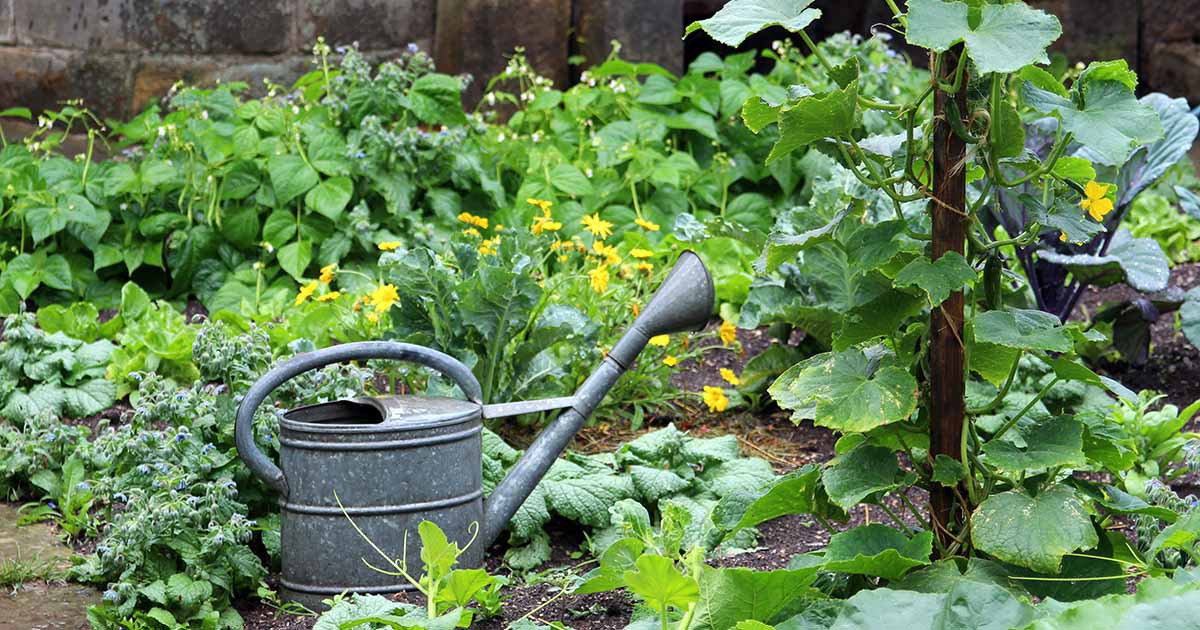
One excellent companion plant for cucumbers is radishes. Radishes help improve cucumber plant growth by loosening the soil with their taproots, allowing better aeration and water infiltration. Additionally, radishes repel cucumber beetles, a common pest that can wreak havoc on cucumber plants. Planting radishes alongside cucumbers can provide a dual benefit of promoting healthy growth and protecting against insect damage.
Marigolds
Another advantageous companion plant for cucumbers is marigold. Marigolds attract beneficial insects, such as ladybugs and lacewings, which feed on aphids and other pests that can harm cucumber plants. These vibrant flowers also release chemicals into the soil that repel nematodes, microscopic worms that can wreak havoc on plant roots. By planting marigolds near cucumbers, gardeners can naturally control pests while creating an aesthetically pleasing garden bed.
When deciding on companion plants for cucumbers, it is essential to consider their compatibility. Some plants, such as potatoes and melons, can compete for nutrients with cucumbers or may be susceptible to similar pests and diseases. Combining cucumbers with the right companions can create a harmonious ecosystem that supports plant health and encourages bountiful harvests.
Watch video for more information:
FAQ
What are some beneficial companion plants for cucumbers?
Some beneficial companion plants for cucumbers include radishes, corn, beans, peas, lettuce, and dill.
Why is it important to understand the growth habits of cucumbers?
Understanding the growth habits of cucumbers helps determine the appropriate spacing, support structures, and care needed for optimal growth and yield.
What factors should be considered when determining cucumber spacing?
Factors to consider when determining cucumber spacing include the variety of cucumber, trellising or bush habit, available garden space, and desired airflow and sunlight penetration.
How can I measure and mark cucumber spacing effectively?
To measure and mark cucumber spacing, use a measuring tape or ruler to determine the desired distance between plants, and then use stakes or flags to mark the spots where each cucumber plant will be placed.
What are the best practices for transplanting cucumber seedlings?
When transplanting cucumber seedlings, it is best to do so in the early morning or late evening, water the seedlings prior to transplanting, dig a hole deep enough to accommodate the roots, and gently loosen the roots before placing the seedling in the hole.
How can I maintain optimal air circulation around cucumber plants?
To maintain optimal air circulation around cucumber plants, ensure proper spacing between plants, avoid overcrowding, prune excess foliage, and use trellises or stakes to elevate the vines.
How can I control weeds and pests in cucumber beds?
Weeds can be controlled in cucumber beds by mulching with organic materials or using weed barriers. Pests can be controlled through proper garden hygiene, companion planting with pest-repellent plants, and organic pest control methods such as neem oil or insecticidal soap.
What are the watering guidelines for cucumber plants?
Cucumber plants require consistent moisture, so it is important to water them deeply and evenly. Provide about 1-2 inches of water per week, ensuring the soil is evenly moist but not waterlogged.
What are the dos and don’ts of fertilizing cucumbers?
Dos of fertilizing cucumbers include using well-balanced organic fertilizers, applying them according to the package instructions, and providing additional nitrogen during fruiting. Don’ts include over-fertilizing, using high-nitrogen fertilizers, and applying fertilizers too close to the plant stems.
How can I train cucumber vines for vertical growth?
Cucumber vines can be trained for vertical growth by using trellises, stakes, or fences. Gently guide the vines up the support structure, securing them with soft ties or twine as needed.
How can I identify and treat common cucumber diseases?
Common cucumber diseases include powdery mildew, cucumber mosaic virus, and bacterial wilt. Identification can be done by observing symptoms such as white powdery patches, mosaic patterns on leaves, or wilting plants. Treatments may include removing infected plants, improving air circulation and sunlight exposure, and using organic fungicides or insecticides.
When is the right time to harvest cucumbers?
Cucumbers are ready to harvest when they reach their mature size, have a firm texture, and are a vibrant green color. Harvesting should be done before the seeds become large and the skin becomes tough.
How can I store and preserve cucumbers?
Cucumbers can be stored in the refrigerator for up to a week. To preserve cucumbers, they can be pickled, canned, or frozen for longer shelf life.
How can companion planting benefit cucumbers?
Companion planting with cucumbers can benefit them by attracting beneficial insects, repelling pests, providing shade or support, improving soil health, and maximizing space utilization in the garden.

Studied Agricultural Engineering-Plant Protection at University of California, Davis.
Head of Content writing team at Southelmontehydroponics.com

